What Is Agile SDLC: The 5 Agile Software Development Life Cycle Phases Explained 2025
The agile manifesto made it clear that processes should make collaboration easier and that customer value should be increased. To do this, processes like the agile software development life cycle were created, which guides teams through development.
Agile teams developing software use an iterative approach to help break down complex tasks into manageable chunks during timed workboxes called sprints. This sounds easy enough, but the software production process can become messy if a process known as the agile software development life cycle (SDLC) isn’t used to guide teams to the desired outcome.
Fortunately, many of the best project management software platforms make it easy to implement the agile process. However, what is the SDLC, and why should teams follow the agile SDLC process?
Below, we cover the agile life cycle in more detail, explain what the SDLC is and the differences between the SDLC and traditional project management methods, and offer tips and tricks on how to implement the method with your team. Let’s jump in.
-
05/21/2024
Updated to add custom graphics.
What Is the Agile Software Development Life Cycle?
The agile software development life cycle is a set of stages that a product must pass through as it moves through the agile development process. The agile life cycle, which is used in many project management methodologies and frameworks, including scrum FDD, DSDM and XP, was designed to improve collaboration and efficiency on cross-functional teams.
Avoid Costly Project Management Mistakes – Get Free Tips Today!
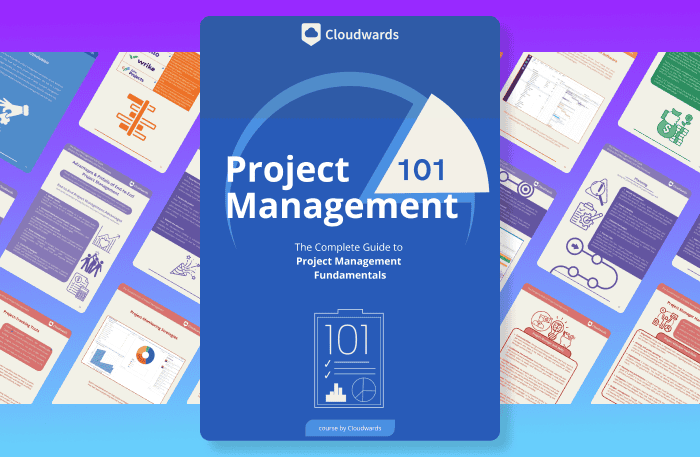
- Discover 10 fundamentals of project management
- Understand step-by-step plans for PM execution
- Learn tips to avoid 5 common mistakes by beginners
What Is Agile SDLC?
The agile software development life cycle (SDLC) is a collaborative decision-making process that focuses on overall customer satisfaction and product development. It’s completed in short, iterative stages (sprints) during which software iterations are planned, produced, tested and deployed to stakeholders or clients every one to four weeks.
During a sprint planning meeting, software development teams, along with a scrum master or project manager and the product owner, work together to generate user stories (tasks) in the product backlog to help make up the next iteration of the software. Once the user stories and the definition of ready and definition of done criteria are set, work on the deliverable can begin.
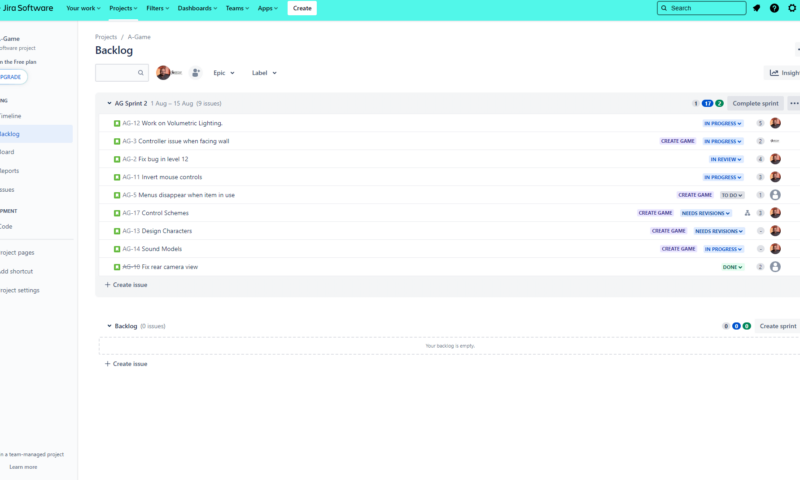
At the end of each sprint, development teams demo the latest iteration of the working software for the stakeholders and client. The teams take in any feedback before holding a sprint retrospective meeting to discuss which processes worked and which ones can be improved. These cycles are repeated until the final product is ready to be delivered to the client.
Software Development Life Cycle: Waterfall vs Agile
Most teams working on software projects use agile frameworks because conventional development methods like waterfall are too restrictive. Developers wanting to move away from traditional methods created the agile manifesto to make software development flexible and adaptable and to deliver more value to the client.
Below, we list the differences between the traditional waterfall method, which primarily uses Gantt charts, and the agile approach to development, which uses scrum or kanban boards, so you can see the key differences between the two methods.
| Waterfall Model | Agile Model |
|---|---|
| Project planning takes place before the project begins and leaves no room for changes. | Project planning takes place at the start of each sprint. Plans can easily be changed. |
| A project manager generates many documents and is the only party that can communicate with clients and stakeholders. | The agile team participates in daily meetings and other ceremonies, negating the need for endless documents. Everyone can communicate with clients and stakeholders. |
| Waterfall uses static team roles that cannot be changed. | Teams are self-organizing and cross-functional. |
| Every part of a project phase must be complete before the next phase can begin. | Agile frameworks allow teams to revisit previous work to make changes. |
| Work is tested at the end of the project, which makes it hard to fix bugs or issues that may be present in the software. | Software is tested and demoed at the end of every sprint so clients can see the latest iteration of the software. The testing also allows bugs to be fixed quickly. |
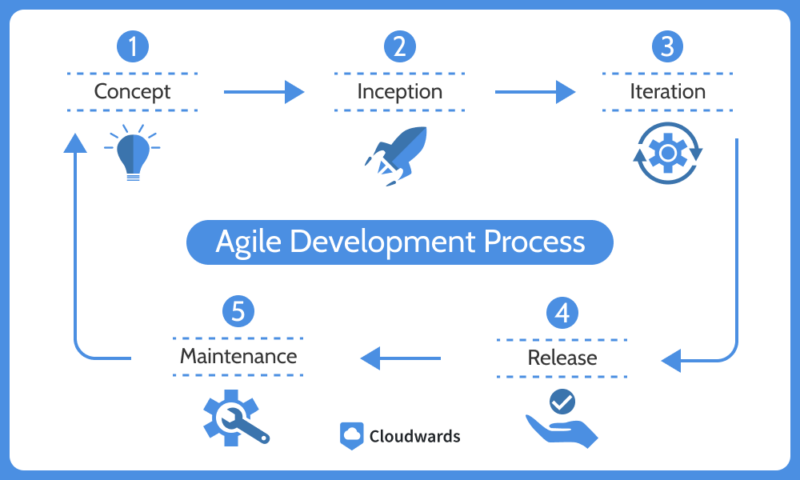
The 5 Stages of the Agile Software Development Life Cycle
Agile development methods use a process flow that includes five distinct stages: concept, inception, iteration, release and maintenance. Let’s take a closer look at each stage below.
1. Concept
During this phase, the product owner meets with stakeholders and clients to discuss their needs and outline the project scope, which also includes timelines and budgets. There’s no need to nail down every detail, as the adaptable nature of agile allows for changes throughout the project.
2. Inception
The inception phase sees the scrum master and the product owner identify the team members for the project. Once the team is assembled, the project details are shared. The development team creates examples of the user interface and software architecture for the client. Doing so allows the stakeholders and client to request changes before the project begins.
3. Iteration
During this phase, the software development team produces working software. Each sprint is considered a development phase and sees developers employ continuous integration (update) methods to ensure user stories and new features are coded. Each software iteration is released at the end of each sprint (known as continuous delivery) so the client can see the software.
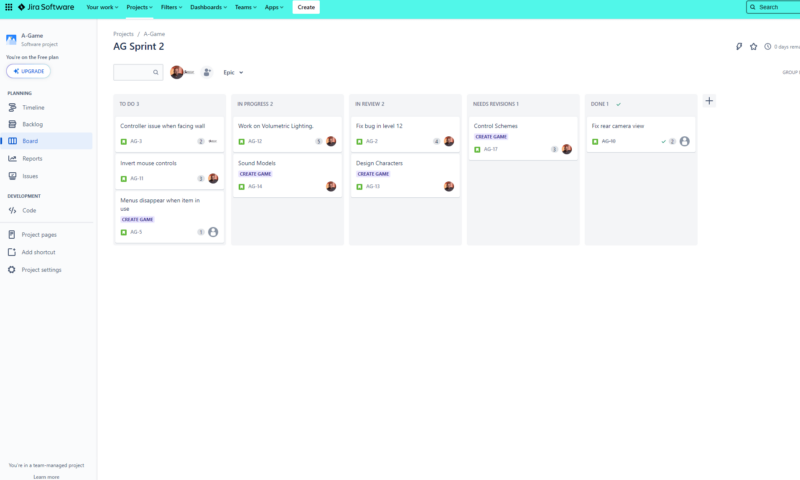
4. Release
The release stage of the development life cycle is when the team can finally deliver working software. The team works on user documentation, and the quality assurance team checks the software to ensure it’s working as intended before going into production.
5. Maintenance
After releasing the software, the team continues to work on the software to squash any bugs that may have been missed during coding. The team also provides support and client training. Should a new feature be necessary, the team can add it during the maintenance phase.
Retirement as a Stage of the Agile Methodology Software Development Life Cycle
During the retirement phase, development and operations teams make sure the client knows the software is being retired. If there is a replacement platform, end-users are migrated to the new system before support for the outdated software ends.
Agile Software Development Project — Client Perspective
Below is an example of a project moving through the five development stages from the client’s perspective. Not every project will look like this, but it gives a good idea of what to expect and the input to provide.
- Concept: During this portion of the project, the client meets with the product owner to discuss the project. Items covered include budgets, timelines, the product and the main goal. During this time, the client should be as clear as possible, so the product owner can formulate a solid project scope.
- Inception: The client plays an important role in the inception phase of the agile life cycle. The product owner and scrum master assemble the team to work on the project and then develop prototypes of the software and user interface. The client views and approves any work the team carries out before the project can begin.
- Iteration: The development team building the software works in segments of one to four weeks (sprints). At the end of each sprint, the developers demo the software. This is the perfect time for the client to provide feedback about what works, what doesn’t, what can be improved and what they want to see in the next iteration.
- Release: The release phase is when the client receives the software. If the software doesn’t meet the standards or the overall goal of the project, the client must let the team know. This is another great time to provide final feedback for the team to discuss during the sprint retrospective meeting.
- Maintenance: The team supports the software they’ve produced for the client for a period of time after the work is finished. During this time, the client can report bugs that need to be fixed or request new features.
The 5 Stages of the Agile Iteration Workflow
Each agile iteration (sprint) usually lasts between one and four weeks. A typical sprint workflow will look similar to this:
- Plan and list the requirements: Each sprint is carefully planned. Before starting work, the product owner communicates to the development team what the end goal of the sprint is and which user stories to work on. Teams can use the best scrum software to help plan and track sprints.
- Develop the product: Each developer is responsible for coding a user story (feature) of the software during the sprint. By the end of the sprint, all developers should have completed their portion of the software iteration.
- Testing the software: At the end of the agile iteration, each user story is tested and then demoed in front of the key stakeholders and the client. During this time, the client and stakeholders can provide feedback.
- Iteration delivery: Once the team has made the requested changes, they deliver the iteration to the client for approval.
- Apply feedback: Stakeholder and client feedback is discussed during a sprint retrospective meeting. The suggested changes to the software or processes are then incorporated into the next development cycles.
Implementing Agile Methodology in Software Engineering: Tips and Best Practices
Below, we give a few tips and tricks for implementing the five stages (ideation, development, testing, deployment and operations) of the agile development life cycle.
- Choose the right framework: Analyze your team and the project at hand and then settle on an agile framework that suits the project and your team’s strengths.
- Hold daily meetings: Communication is the key to success in agile, so don’t skip daily meetings that let you address issues, discuss work and offer praise.
- Communicate openly: Talk is cheap if leaders aren’t being honest. Be open and transparent when communicating so that every team member knows what’s happening.
- Test the iteration with stakeholders: A big part of agile is showing clients and stakeholders frequent software updates. Let clients be involved in the iteration process so they can offer frequent feedback and guidance.
- Meet and collaborate: Agile frameworks, especially scrum, have many ceremonies (meetings) that involve every team member. Be sure to hold kick-off events, sprint planning sessions, sprint reviews, retrospectives and daily meetings. Your team will be able to collaborate better, which will lead to higher-quality deliverables.
The 4 Cs of Agile
To ensure teams are correctly implementing and following agile methods, project managers or scrum masters can fall back on the four Cs of agile. The four Cs are:
- Clarity: The whole team must know what’s expected of them in their roles and what the project goal is. Without clarity, it is hard to hold the team accountable.
- Commitment: During daily stand-up meetings, each team member must make a commitment regarding their work for the following day. For example, developers might commit to a user story, and the scrum master may commit to gathering resources.
- Comment: If a project is not going as planned, project leaders must speak up and offer feedback to the team so everyone knows what is happening. The idea is not to attack or fall into scrum anti-patterns but rather to inform.
- Coach: Project leaders or scrum masters must hold one-on-one meetings with team members to address concerns, offer mentoring and better understand how they can help individuals fulfill their potential.
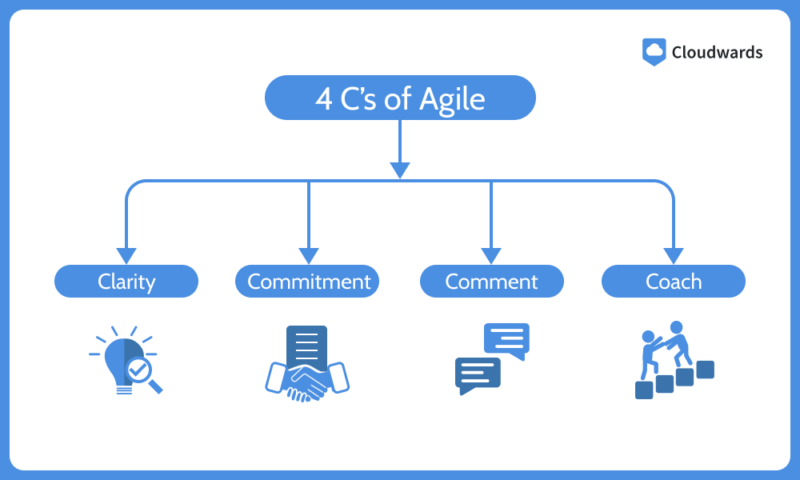
Final Thoughts
The software development life cycle has helped agile teams increase customer value and deliver high-quality products. The flexible, iterative process encourages communication and collaboration between teams and stakeholders and ensures customers get what they want on time and under budget. It’s easy to see why teams incorporate the SDLC process.
We hope our guide to the SDLC has helped you understand the software development methodology and feel more confident implementing it in your agile projects. Have you used the SDLC? Which agile framework do you use the SDLC with? Do you have any hints or tips that would help our readers?
Let us know in the comments and check out our Scrumfall guide for a hybrid approach. Thanks for reading.
FAQ: Project Management Software Development Life Cycle
The software development life cycle is a series of stages that software must pass through as it moves through the agile development process.
The three stages of agile planning are planning, development and processes.
The five stages of the SDLC are concept, inception, iteration, release and maintenance.
The SDLC is a collaborative decision-making process that agile teams use to increase customer satisfaction by producing testable iterations of software over a short period of time, known as a sprint.


